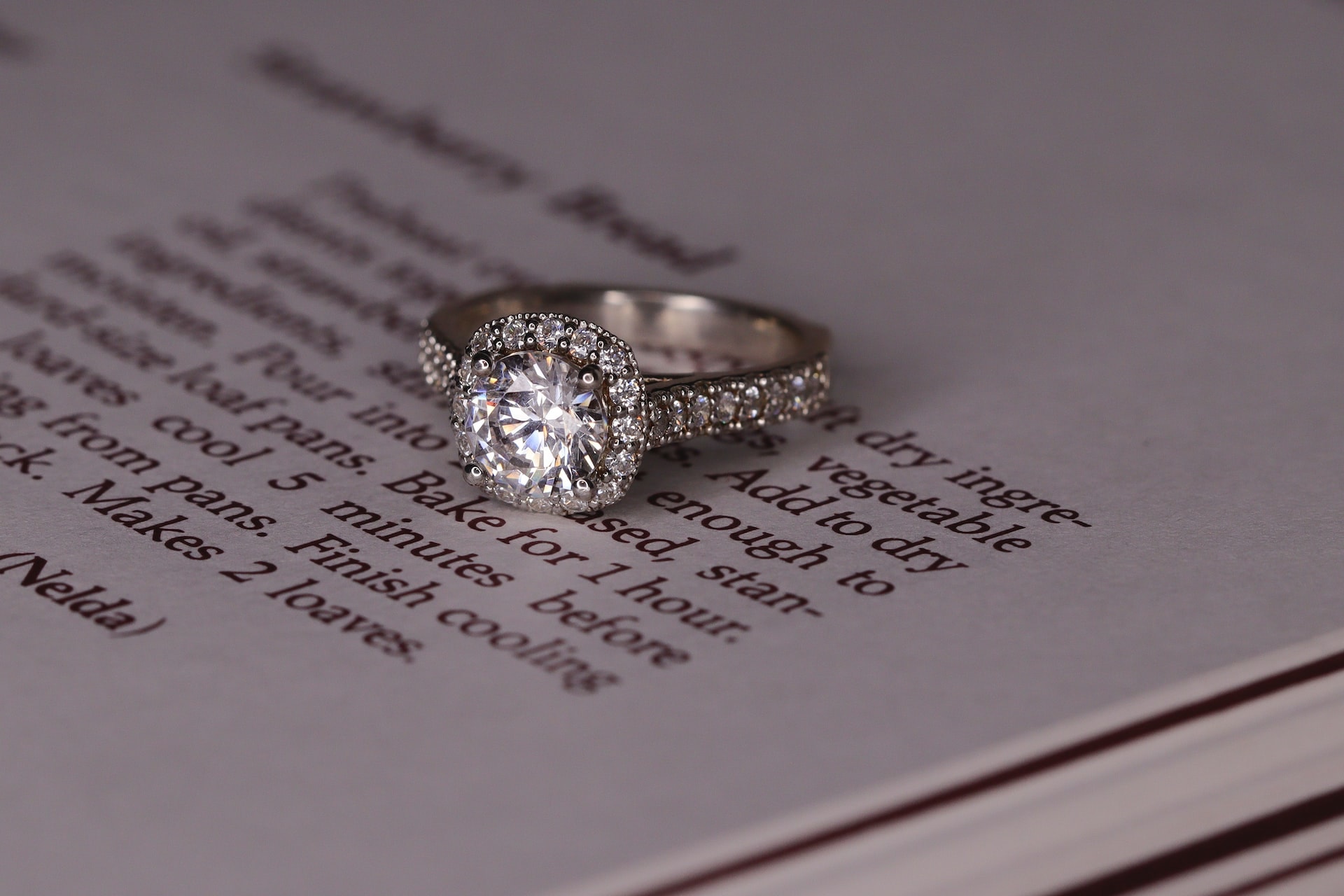
Table of Contents
When we say diamond, the quintessential shape that comes to mind is the classic round brilliant. But while this is the most popular shape that most people opt for, there are 9 other diamond shapes that are equally intriguing and offer just as much beauty.
The shape you choose will largely influence the style of the ring, its brilliance, design, and even price. This is why choosing the best diamond shape is one of the most important decisions you have to make when purchasing a diamond. Most websites will offer you the shape of the diamond as a search filter.
Diamond shape refers to the geometry and overall form of the diamond, while the cut refers to the proportion, number of facets, symmetry, and other technical aspects that impact the light performance and appearance of the stone. Another thing to note is that all shapes except the round cut are known as fancy shapes. With that said, let’s take a quick look at the 10 diamond shapes, and their pros and cons.
1. Round Brilliant Cut
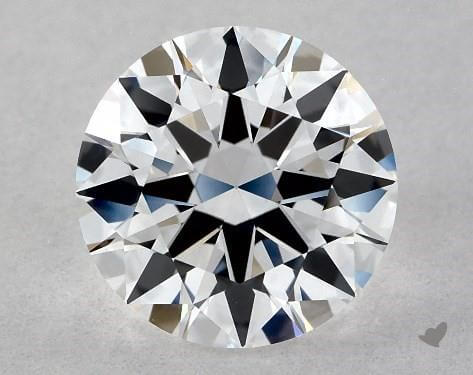
The round cut, also known as the round brilliant, is by far the most popular diamond shape today, with over 75% of all manufactured diamonds coming in this shape. The cut was created by Marcel Tolkowsky in 1919 and is known for its excellent light performance.
Round Cut Pros:
- With 58 strategically placed facets, the round cut is the most brilliant of the diamond cuts. Its conical shape and faceting arrangement allow light to be funneled back up to the top creating unmatchable sparkle.
- Round cut diamonds are very versatile and look stunning in almost all types of engagement ring settings. They are beautiful set alone on a simple band as a solitaire and just as eye-catching when placed in more intricate settings.
- The round shape goes well with most finger types.
Round Cut Cons:
- It is among the most expensive of diamond cuts. This is partly due to the fact that the cutting process results in a high amount of rough diamond wastage. This lower yield translates into high prices for the consumer.
2. Princess Cut
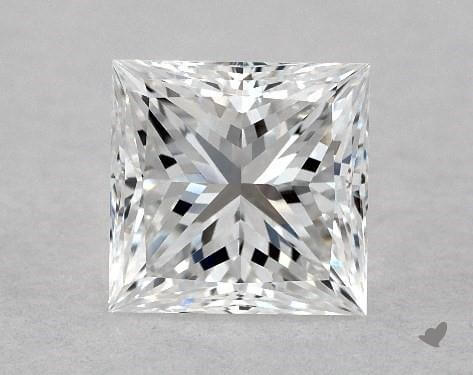
The princess cut is the most brilliant of the fancy shapes and is the second most popular diamond cut. Princess cuts are typically square, although there can be rectangular versions as well. They have a modern, stylish appearance.
Princess Cut Pros:
- It is less expensive than some other diamond shapes, mainly because the princess cut makes good use of the rough diamond, using over 90% of the rough.
- It is a forgiving cut, hiding inclusions and tints fairly well, meaning that you can save money on these aspects of the diamond.
- The princess cut is the most brilliant of the fancy shapes and has an intense faceting structure.
- Princess cuts look great in most settings whether minimalist and simple or maximalist and elaborate.
Princess Cut Cons:
- Its four corners are quite vulnerable so the setting should provide protection for the shape’s pointed corners, which are at risk of chipping or breaking if impacted.
3. Cushion Cut Diamonds
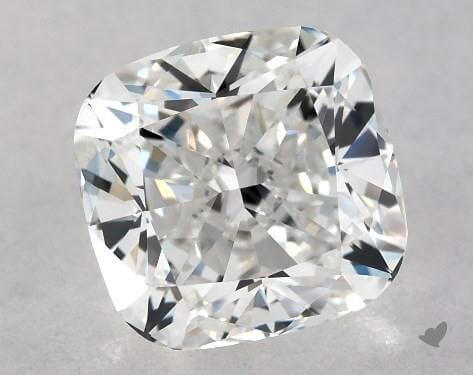
The cushion cut has become the third most popular shape for engagement rings in recent years. It was originally created in the 1800s and quickly became the most sought after diamond cut. It was the closest thing to a round diamond that was possible with the technology available at the time, resulting in a shape that was square with rounded edges. Somewhat similar in appearance to a cushion, if you will. Cushions are experiencing renewed interest and popularity as people turn towards vintage designs.
Cushion Cut Pros:
- You have two versions to choose from – antique and modern. The antique cushion cut is the original shape, with a vintage appearance and broad facets. The modern version is a modified cushion brilliant which has an added row of facets on the table to heighten the brilliance and sparkle of the cut.
- The beauty of cushion cuts lies in its vintage look. It’s a cross between the two most popular cuts – the round and the princess, giving it a unique eye-catching look.
- It doesn’t have sharp edges, meaning that the stone will not snag on objects or break.
- Cushion cut gemstones look stunning as the facets can enhance the color.
Cushion Cut Cons:
- Large facets on the cushion cut can show inclusions and flaws in the diamond. It doesn’t hide color tints as well, requiring you to purchase a diamond of higher quality.
4. Emerald Cut Diamond
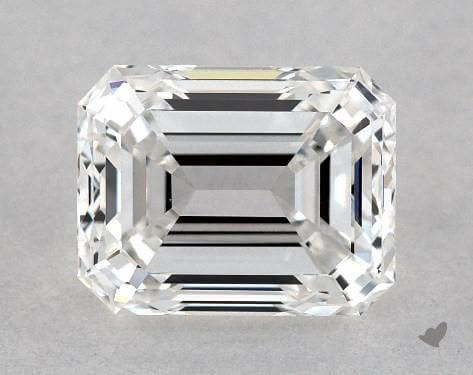
The emerald cut was created for the emerald gemstone, to bring out its color and beauty. However, as it became extremely popular, it was then adopted for use in diamonds. The emerald cut aims to bring out the clarity of the diamond rather than its sparkle. The cut is known as a step cut, which uses steps rather than facets, contrasting dark and light to create a ‘hall of mirrors’ effect.
Emerald Cut Pros:
- The large table and long facets show the clarity of the diamond, creating a unique, confident look. These smooth surfaces enhance the color and clarity of the diamond, making them the focal point of the stone.
- It is an 8 edged cut with beveled corners, meaning that not only does it not snag or catch on everyday objects, but it is also a durable shape.
- The emerald cut tends to elongate the fingers, making it especially perfect for shorter fingers.
- The diamond tends to stand out, as the cut enhances the stone’s appearance, making it look larger.
- Emerald cut diamonds are among the most affordable of diamond shapes.
Emerald Cut Cons:
- As it doesn’t hide inclusions or color, you will need to purchase a high quality colorless diamond for best results.
- If you want a flashy, brilliant diamond, this cut isn’t for you.
- The diamond needs to be cut expertly to avoid windows and extinction in the cut.
5. Oval Diamond Cut
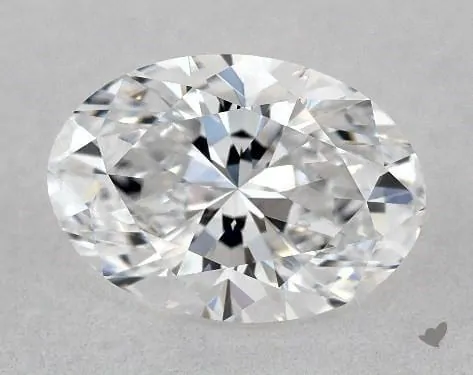
Created in the 60s, the oval cut is not the most popular diamond cut out there but it is definitely unique and an eye-catching shape. It is a sophisticated and elegant shape and great for anyone who wants something out of the ordinary.
Oval Cut Pros:
- The oval cut is extremely brilliant due to its high number of facets and unique arrangement. It’s ideal if you want a sparkly stone without the traditional look of the round brilliant.
- Oval diamonds are perfect for shorter fingers, as the shape lengthens the fingers and gives it a slimming look.
- The oval cut is quite affordable and gives you good value for money. However, finding a high quality, well cut oval diamond takes some searching.
- Ovals have no sharp edges, meaning that they don’t snag or catch on objects. What’s more, they don’t have any specifically vulnerable sections.
Oval Cut Cons:
- The oval tends to show the bow-tie effect if not cut perfectly. Most oval cut diamonds have some level of bow-tie, ranging from near invisible to severe.
- Oval cuts are not very forgiving, and tend to show inclusions and flaws in the diamond.
6. Radiant Cut Diamond
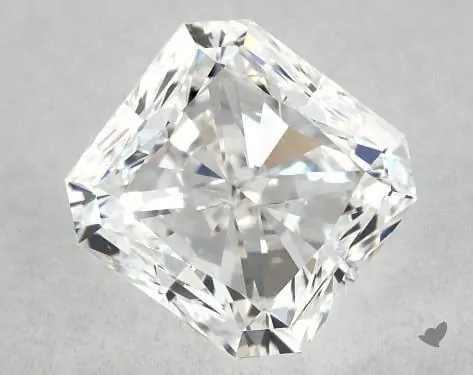
The radiant cut is a square shape that is a cross between the princess and cushion cut. Stylish and elegant, this relatively new cut (created in the 70s) is quite rare and can be difficult to find in most retail shops. Its unique and deep cut maximizes the refraction of color and is highly brilliant.
Radiant Cut Pros
- It is highly brilliant, hence its name ‘radiant’. It is brighter than most other diamond cuts and definitely stands out on any finger.
- While it may look square, it actually consists of 8 corners. The radiant does not have sharp pointed edges, like a princess cut, meaning that there is less likelihood of breakage.
- The cut is very forgiving and tends to hide inclusions and color tints. This is due to its faceting pattern and brilliance. This means that you can purchase a more affordable diamond and still have the look you’re after.
- Radiant cuts don’t catch on hair, clothes or other objects as they don’t contain sharp edges.
Radiant Cut Cons
- As we mentioned above, the radiant cut is quite rare. It may be difficult to find a good selection of radiant cut diamonds to choose from.
- Due to the depth of the cut, the diamond may not appear to full advantage and can look smaller than it is.
7. Asscher Cut Diamond
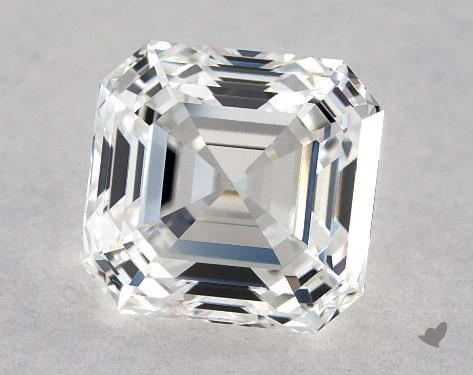
This unique cut is the fourth most popular shape for diamond engagement rings in the world today. The Asscher is a step cut, like the emerald cut, but unlike the emerald, it shows more brilliance and sparkle. This is due to the interesting arrangement of the long facets and the symmetry of the cut. Named after its creater, Joseph Asscher, this cut became popular in the 1920s during the Art Deco period, but has continued to maintain its position as one of the most popular diamond cuts.
Asscher Cut Pros:
- This is an extremely versatile cut and looks stunning set in most engagement ring designs. It looks great on most types of fingers and can accommodate a range of tastes from minimalist to maximalist.
- The Asscher cut is very brilliant but has a unique appearance, different to that of the round or the princess cut. Its long facets highlight the beauty of the diamond and the quality of the stone.
- The cut does not have any sharp corners and is not prone to breakage or to catching on objects.
Asscher Cut Cons:
- The Asscher cut shows blemishes and flaws in the diamond clearly meaning that for the best look, you will need to invest in a high quality diamond.
- Because the Asscher cut is very deep, a lot of the diamond is under the surface. This does not showcase the size of the stone to maximum advantage.
8. Marquise Cut Diamond
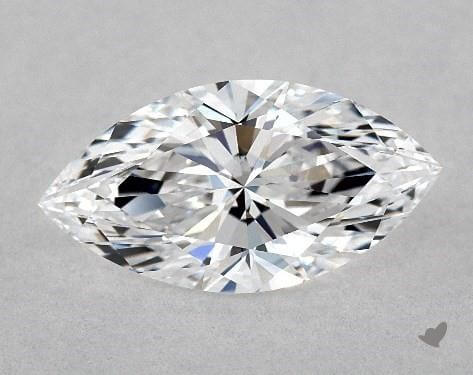
Known by a few different names, including football-shaped, boat-shaped and navette (which means little ship in French), the marquise cut is a unique, vintage shape that really makes a statement. It’s one of the oldest diamond cuts, having originated in the French court of Louise XV, supposedly as a tribute to the smile of the king’s mistress, Madame de Pompadour. The marquise cut is rich in history and tells a story.
Marquise Cut Pros:
- The cut is very brilliant and sparkles beautifully on your finger. It is quite a shallow cut, compared to most other diamond cuts, but still manages to exhibit its fire and brilliance.
- The shape of the cut is ideal to elongate shorter fingers. It adds length and makes fingers appear slim.
- This is a very versatile cut that can be set into most types of settings. It looks stunning in vintage designs but can also carry of a modern setting with style.
- The marquise cut can hide flaws and inclusions fairly well, due to its faceting arrangement and shape.
Marquise Cut Cons:
- The main issue with the marquise cut is that it tends to show a ‘bowtie’. As the name implies, this refers to a bowtie appearance across the center of the stone. Most marquise cut diamonds have some level of bowtie and if the stone hasn’t been expertly cut, this can be quite severe.
- Due to the sharp points on either end of the marquise, it is quite a delicate cut. It needs to be mounted in a setting that will protect these vulnerable edges and keep it from impact and breakage.
9. Heart Cut Diamond
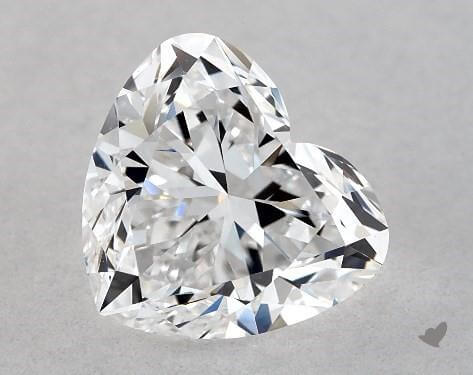
The heart cut is a fairly recent addition to the ranks of diamond cuts, due to the sophisticated technology required to create it. It is quite a complicated cut that begins as a wide pear that is then changed into a heart with a cleft at the top.
Heart Cut Pros:
- They are a modern shape that exudes femininity and gorgeousness, while celebrating an ancient symbol of love.
- Heart diamonds are quite unique and not a popular option for engagement rings. This offers a great alternative for women who want something unique and unconventional.
- The heart cut looks eye-catching and unique as a solitaire but also stunning when set in more elaborate settings.
- It is a meaningful shape, unlike the other cuts that are simply geometrical forms (although some believe that the circle diamond shape represents infinity). The heart symbolizes love and passion.
Heart Cut Cons:
- It can be quite challenging to cut the heart shape and require expertise to attain the brilliance and symmetry required. This can then translate into higher prices for the consumer.
- For the perfect look, you will have to choose a diamond with no color and high clarity as these can be easily seen in the heart cut.
- Unlike other diamond cuts that have lasted the test of time, the heart shape can seem a bit too cute or trendy, and there is the danger that it can go out of style.
10. Pear Cut Diamond
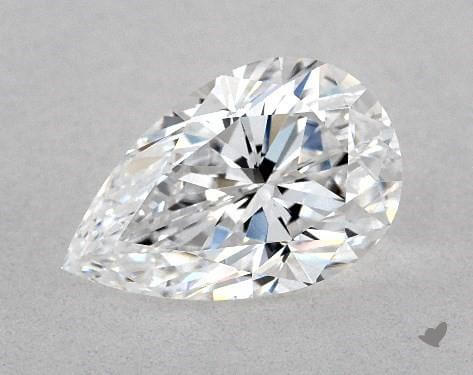
A cross between the round brilliant and the marquise cut, the pear shape exhibits the best of both these shapes while retaining its own unique signature. The pear cut is quite an old cut, originating in the 1400s. It is perfect for those who adore history and vintage touches but it can also take on a modern style.
Pear Cut Pros:
- The pear shape is quite versatile and can be set in a great many type of settings. They are perfect when set in vintage settings but look equally stunning in sleek, modern designs.
- The pear shape elongates the fingers and looks great on shorter fingers. If you, like most of us, wish to have longer looking fingers, then this might be the cut for you.
- Pear shapes are not in high demand and aren’t very popular as an engagement ring choice. However, a well cut pear is a thing of beauty and quite a rare find and makes for a unique, unconventional choice for your ring.
- Pear cuts are quite affordable compared to many other diamond cuts.
Pear Cut Cons:
- As with most long cuts, the bow-tie effect is something to watch out for. This can mar the beauty of the pear cut and hide its brilliance.
- The pear requires exacting precision and high cut expertise to bring out its brilliance and fire. Poorly cut pears don’t do justice to the diamond or the shape and unfortunately are all too common.
- The pointed edge of the pear is quite vulnerable to breakage and needs to be set in a protective setting, such as a bezel or in v-tipped prong. This edge can also catch on objects which can also impact its integrity.
- Pears tend to show inclusions, blemishes and tints so you will need to choose a high quality diamond. While this is an advantage in that your diamond will be stunning in appearance, on the down side, it’s not ideal if you are on a budget.
Wrapping Up
So there you have it, the ten shapes that diamonds are commonly cut into. Whatever your style, one of these ten shapes are bound to catch your attention. You can choose to follow the traditional path and go with a round brilliant or choose an unconventional shape to bring out your personality and style, like the heart.
Buying online? Always make sure that you see images of the actual diamond before you purchase. We recommend James Allen as their ground-breaking Diamond Viewing Technology allows you to see the diamonds in 360 degree magnification.









